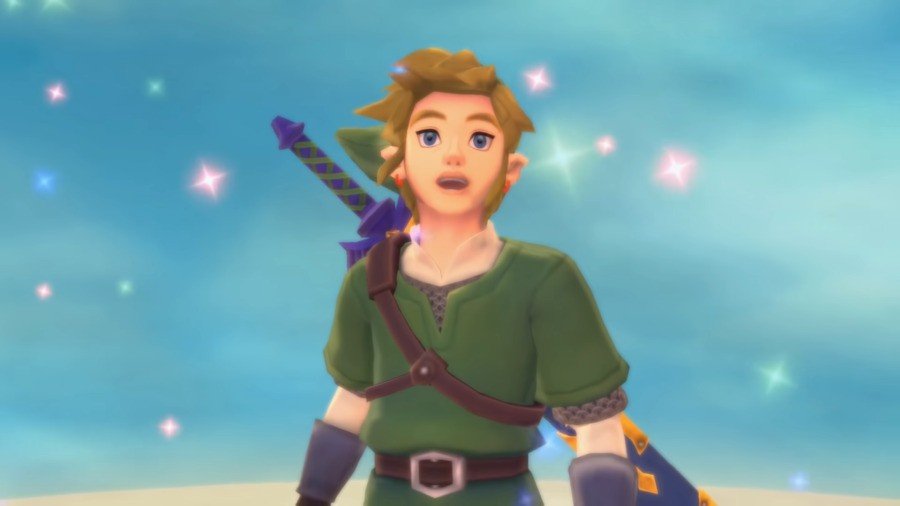Update (Tue 3rd Aug, 2021): First hands-on impressions of the Switch OLED model have now cropped up in various UK publications, following on from US outlets' first looks last month. We've added a selection of hot new takes to our round up below.
Nintendo surprised everyone when it announced a brand new system — the main selling point being the new 7" OLED screen. While it's been confirmed there are no upgrades to the CPU or RAM, what it does include is a wider kickstand, enhanced audio, a stylish new dock and a wired LAN port.
A number of outlets have now gone "hands-on" with the system, so we've rounded up some of the highlights from each of these early impressions.
IGN loved the screen and likened the vibrancy to when the Game Boy Advance got updated, GameSpot said the new OLED screen won't necessarily blow you away if you've already got a "solid" television and The Verge noted the handheld mode now feels like less of a compromise. European outlets such as VGC, Metro UK, My Nintendo News and Games Radar found the new screen an impressive upgrade which reinvigorated older titles in side-by-side comparisons, and also mentioned how the screen performs under strong light sources and at different viewing angles.
IGN – Tom Marks, Deputy Reviews Editor
The strength of the new display (unsurprisingly) becomes even more obvious when turned on, immediately shining bright and clear from pretty much any viewing angle I tried. Honestly, it’s not an exaggeration to liken its vibrance to when the Game Boy Advance SP got an updated model with a far brighter screen, making the original Switch look noticeably dimmer if compared directly. Its colors are richer too, and I’m not kidding when I say Breath of the Wild’s grassy fields looked almost cartoonishly green viewed side-by-side.
The next most exciting feature of the OLED Model (somewhat surprisingly) is actually its improved kickstand. It’s no secret that the base model’s offset kickstand is flimsy and unreliable, but I wasn’t expecting this version’s to provide such a resounding response to the issues of its predecessor. Not only does it stretch all the way across the back of the Switch, its hinges offer a satisfying amount of resistance so that you can easily lean it at nearly any angle and be confident it will stay that way. It’s incredibly sturdy, with the same tactile matte finish as the back of the Switch Lite. If it weren’t for the charging port still being blocked while standing up, I’d say the need for a third-party stand is now all but dead.
GameSpot – Alessandro Fillari, editor and producer
While people who regularly play in docked modes with solid TV sets aren't going to be blown away by the OLED model's visuals, this still makes handheld mode look better than it ever has. It honestly made me interested in seeing how my other favorite games, like Bayonetta 2 or Smash Bros. Ultimate, would look on the new display.
…The key areas in which the Switch OLED sees improvements are focused on the handheld experience. While the handheld mode is convenient, it also offers less than perfect conditions for experiencing certain games compared to playing it docked. While I often prefer to play Switch games in the handheld mode, there are times where I do play games in the TV mode, which allows me to get a better sense of a game's visuals and performance. Unfortunately, the significant improvement here being the OLED screen means the main benefit of the new model will be lost when playing in docked mode
The Verge – Dieter Bohn, Executive Editor
So the Nintendo Switch OLED model justifies its existence, but does it justify an upgrade? For most people, the responsible answer is no. The improvements here are not going to unlock new game experiences or capabilities, they just make the current experiences a little nicer.
I don’t think I’m going to be responsible, though. I knew going in that it was “just” a Switch with a bigger, brighter screen. I know after playing it that handheld mode feels like much less of a compromise than it does today.
VGC – Andy Robinson, Editor in Chief
Side-by-side with an original Switch model, OLED’s screen is a quantum leap over its predecessor; Breath of the Wild looks razor sharp and crisp, like a rezzed-up PC port (but no, there’s no resolution boost), while Mario Kart is a tour de force of colour and allows you to spot items and characters in the distance far more easily.
Playing Mario Odyssey side-by-side with an original Switch reveals far more detail on scenery like grass and water on the newer model, while the latter overall looks totally washed out compared to the newer unit. As far as the screen goes, it’s really no contest between the two Switch models: if you’re a portable player, you’ll want to throw your old model in the bin once you’ve experienced OLED’s glorious display.
METRO UK – David Jenkins, GameCentral Editor
One race on Rainbow Road from Mario Kart shows just how much better the new screen is, especially when you see it running next to the old console models. Suddenly, the original’s colours seem faded and washed out in comparison, while the OLED’s feel vibrant and distinct. Even the more muted colours of Breath Of The Wild look more vivid. The difference is immediately obvious to anyone and while you quickly get used to it in isolation, the moment you put it back next to an older console it suddenly seems like night and day again.
My Nintendo News – Richard Atkinson (Nintendomau5)
Waking Link up after his 100-year slumber and stumbling to the famous cliff edge, the opening 10 minutes of the esteemed open-world adventure burst with colour; the Great Plateau looked even more incredible, and we had to actually turn the brightness down as it was almost too dazzling. It’s worth noting here that we turned off the auto-brightness completely for testing purposes, but the feature remains and reacts as quickly as it does with the current model. We decided to tilt the screen so the lighting in the room was refracting off the Switch’s display, and our view of the action was hardly altered. This could be a huge benefit for gamers out there who want to tackle their favourite titles outdoors, since the original LED screen tends to struggle when it’s exposed to direct sunlight. It’s also benefited by a thin bezel that does a great job of amplifying the larger screen. Make no mistake though, the OLED display is the star of the show.
Games Radar – Brendan Griffiths, Managing Hardware & eCommerce Editor
The brighter colors and larger screen improved the display from a distance, while the enhanced brightness will hopefully stand up to the glare when using the Switch OLED outdoors.
Seeing as I was trying the Switch OLED indoors, I couldn't test against sunlight directly. (The typically gloomy July day in London saved me the bother of asking if I could take it outside, too.) However, viewing angles seemed to be slightly better than the older Switch, perhaps due to the extra brightness OLED tech is able to provide.
It's not all good news, though. I used one of the room's overhead LED spotlights to test screen glare, and there doesn't seem to be any protection against it, such as a new screen coating. This is a bit disappointing given how the Switch OLED's main improvements are for use in handheld mode.
So there you go, some early impressions — of course, you can read them in full over on the respective websites. What are your own thoughts about the Switch OLED at this stage? Speaking to most, do you feel the need to upgrade? Do you think it might be a great place to start for a new Nintendo fan? As always, leave your thoughts down in the comments below.


